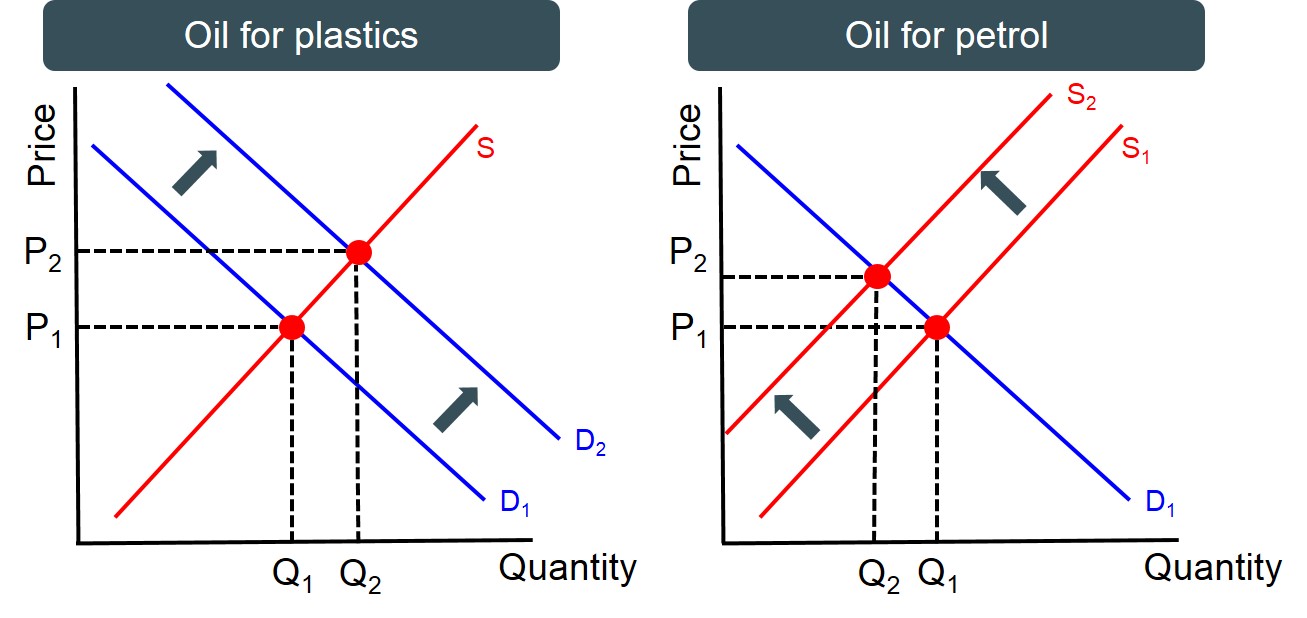Booklet 2 micro - Price determination in a Competitive Market
1/23
There's no tags or description
Looks like no tags are added yet.
Name | Mastery | Learn | Test | Matching | Spaced |
|---|
No study sessions yet.
24 Terms
Demand
The quantity of a good/service that consumers are willing and able to buy at a given price, at a particular time.
Supply
The quantity of a good/service that producers supply to the market at a given price, at a particular time.
What causes movement along the supply or demand curve? (contraction/extension in supply or demand)
Changes in price
What is represented by the demand curve shifting out?
An increase in the quantity demanded at every price
Non-price determinants of demand
People’s real income.
Changes in tastes and fashion.
Price of substitutes.
Price of complementary goods.
Population size + age.
Marketing e.g. McDonalds monopoly.
Seasons.
What is represented by the supply curve shifting out?
An increase in the quantity supplied at every price.
Non-price determinants of supply
Costs of production.
Improvements in tech (can reduce costs).
Changes in the productivity of factors of production.
Indirect taxes on firms.
Subsidies (reduces costs).
What do classical economists believe about excess supply and demand?
In a free market economy, excess S/D won’t last as market forces and competition work to naturally regulate the economy. It therefore self-corrects (but there’s a time-lag).

When looking at a subsidies diagram, where would you see consumer gain?
The fall in price (paying less)
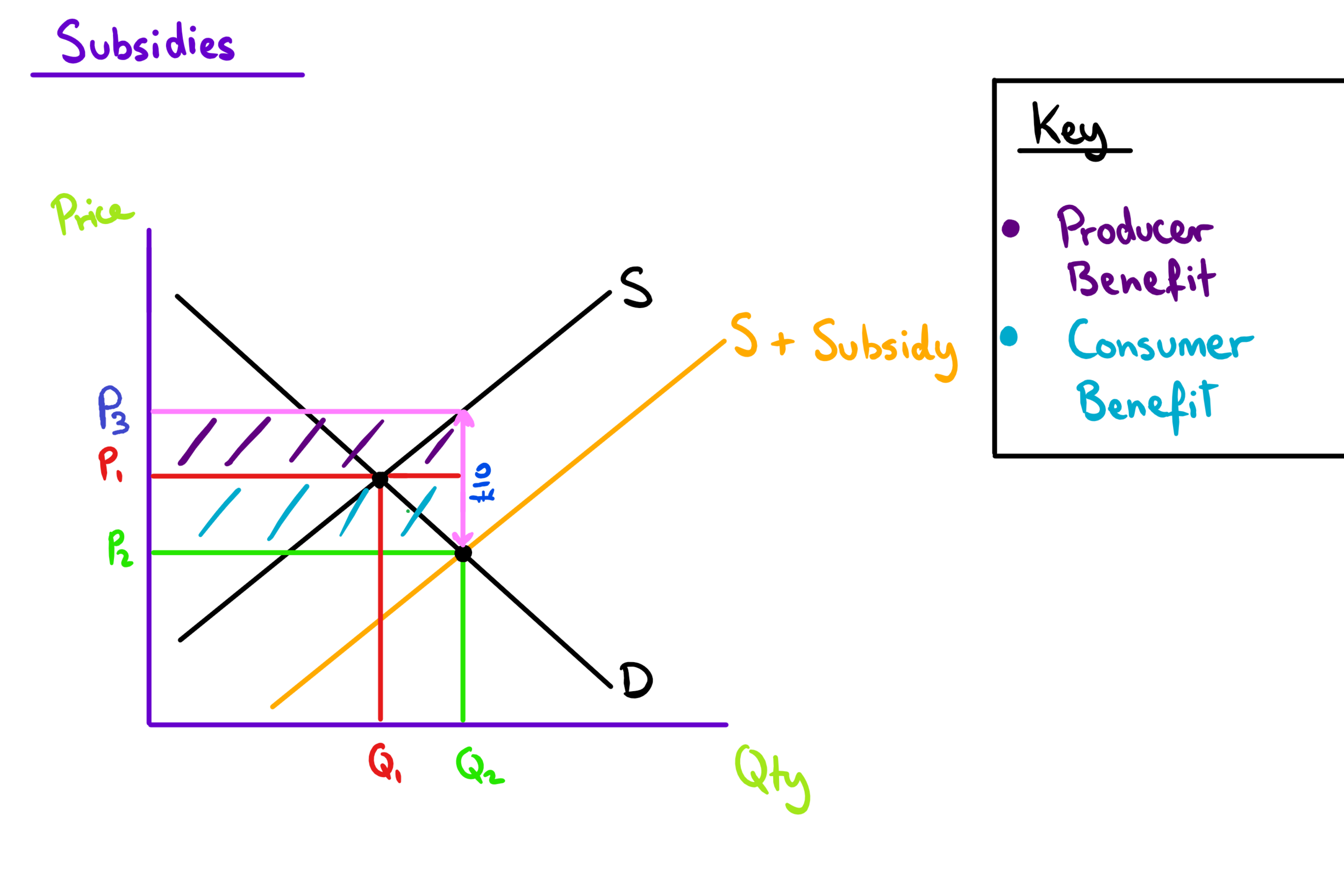
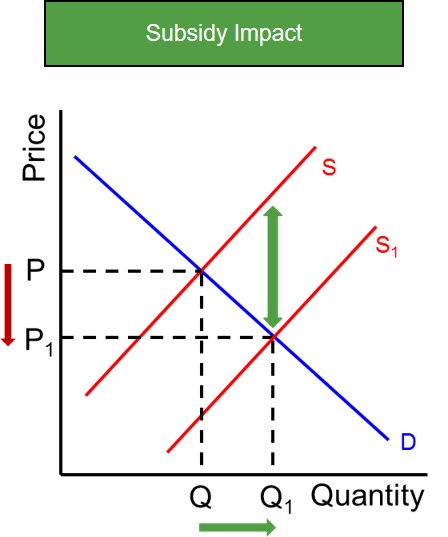
When looking at a subsidies diagram, where would you see producer gain?
Where the new quantity meets the original supply (extra revenue).
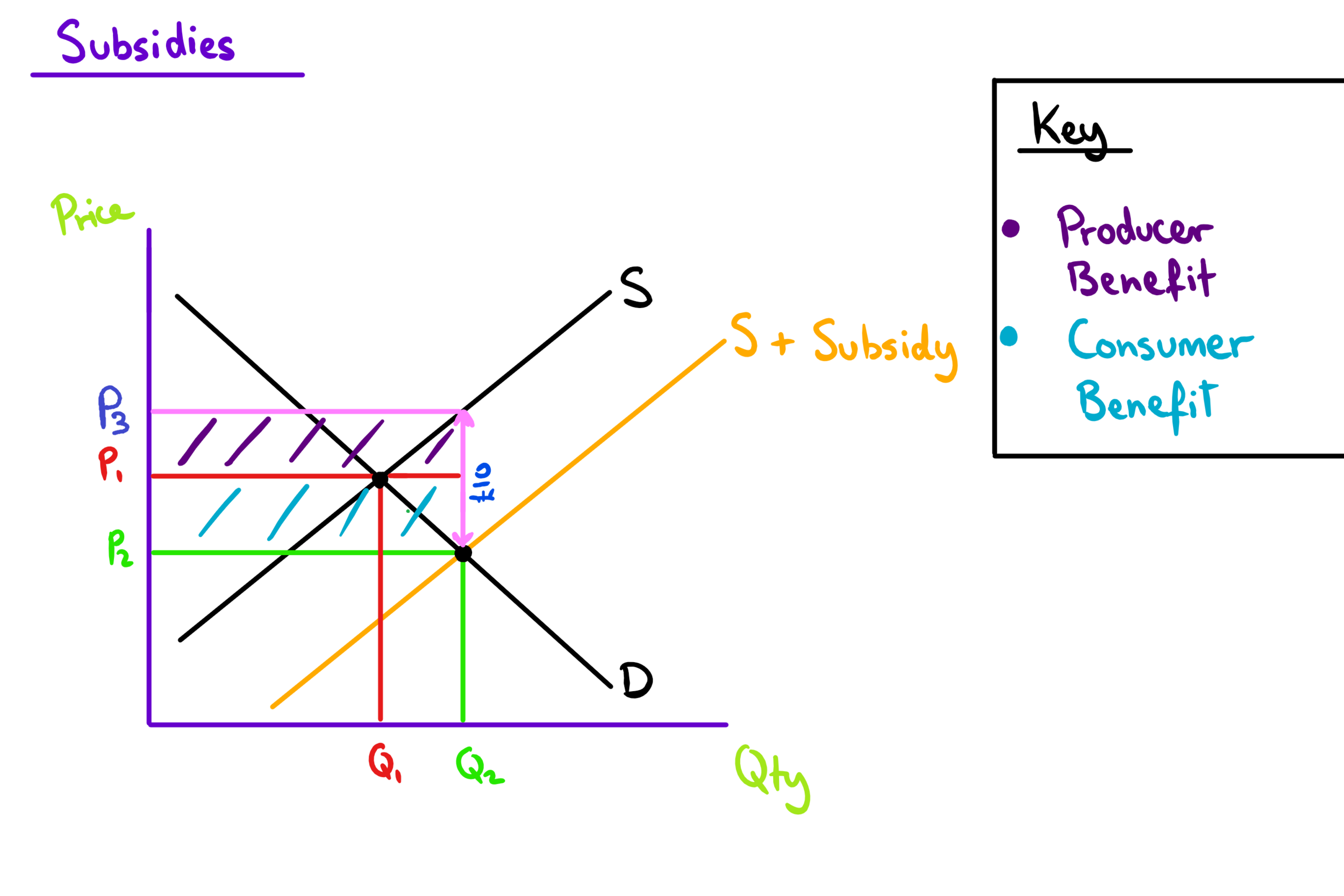
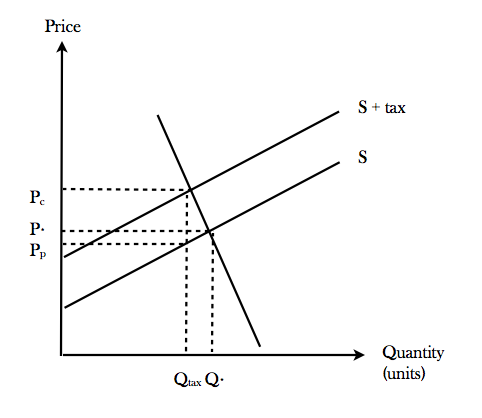
When look at a tax diagram, where would you see consumer burden?
The rise in price (paying more)
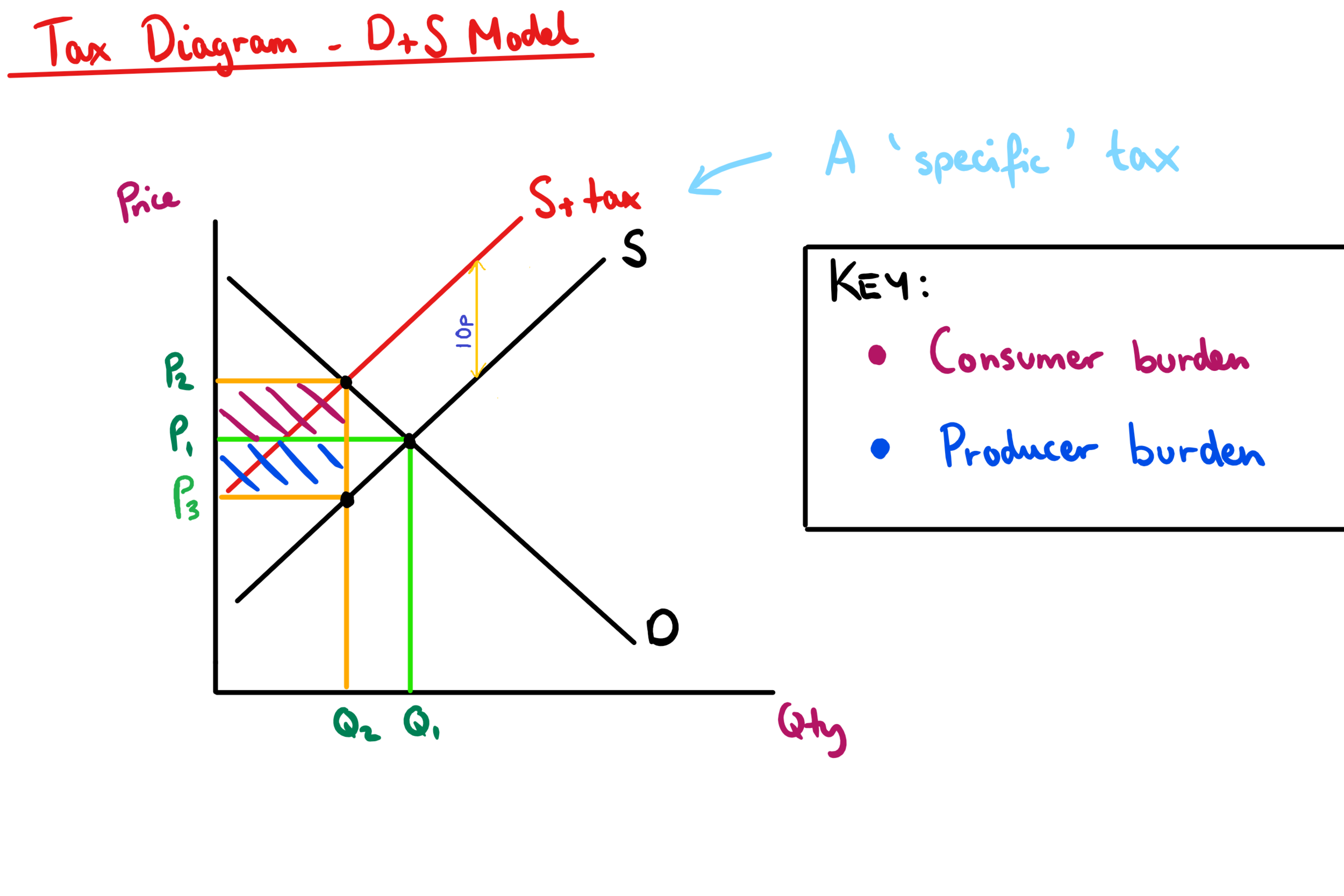
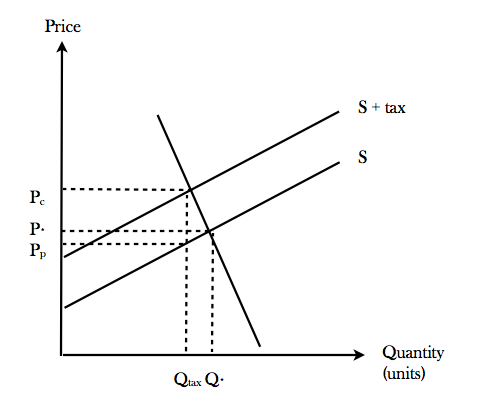
When looking at a tax diagram, where would you see producer burden?
(on the term diagram) difference between P and Pp. Firms still pay some of the tax that isn’t covered by consumers.
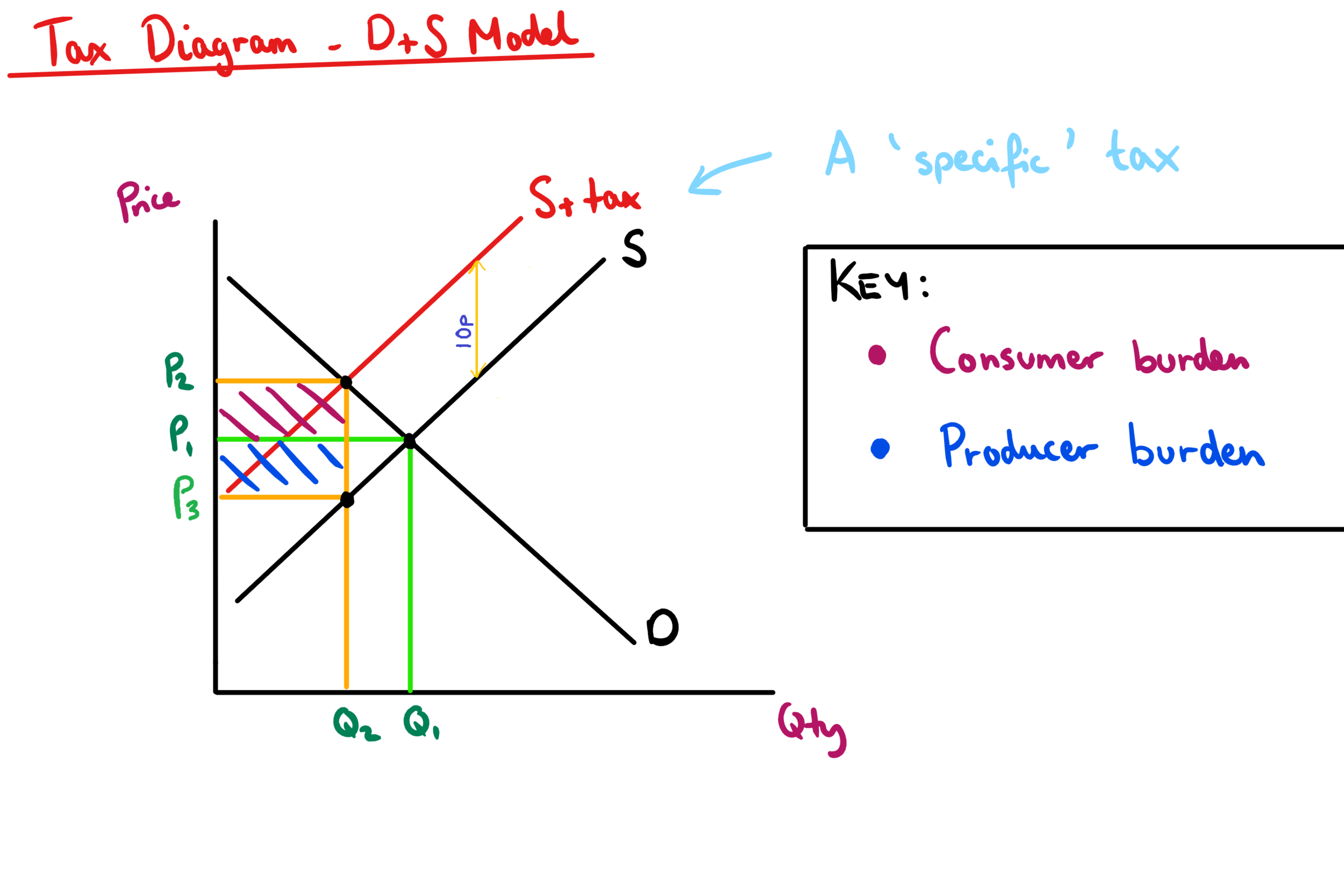
What is the price mechanism?
It describes how changes in supply/demand of a good or service can lead to changes in its price, and the quantity bought/sold.
What is needed for the price mechanism to work?
Markets must be competitive.
Consumers and producers must follow self-interest.
What are the 3 functions of the price mechanism?
INCENTIVE → Higher prices provide higher profits, encouraging increased production and sales.
SIGNALLING → Changes in supply/demand influence price, signalling producers and consumers to act accordingly
RATIONING → if there’s high demand for scarce resources, price will increase to restrict the quantity demanded.
Advantages of the price mechanism:
-Allocative efficiency (where supply meets demand).
-Operates on its own, without cost of human regulators.
-Prices kept at a minimum as resources are used as efficiently as possible.
Disadvantages of the price mechanism:
-Inequality in wealth & income.
-Under-provision of merit goods, overprovision of demerit goods (because supply and demand for such goods isn’t where socially optimal).
-Those with limited skills/ability to work suffer unemployment or very low wages.
-Public goods won’t be produced.
What is a consumer surplus?
When a consumer pays less than they were prepared to pay for a good/service. (above equilibrium, below demand curve).
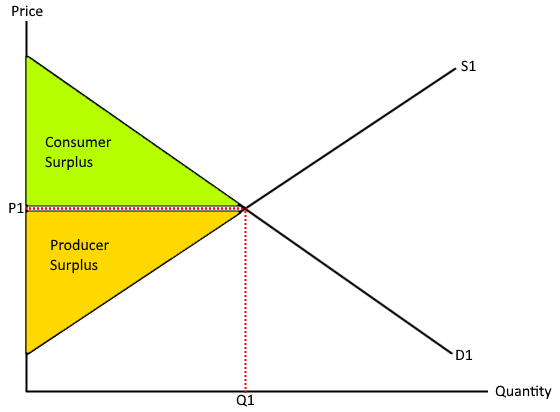
What is a producer surplus?
When a producer receives more than they would have been willing to accept. (below equilibrium, above supply curve)
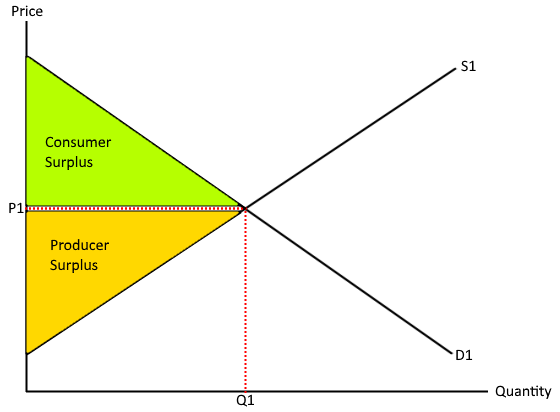
Describe joint supply…
When the production of 1 good/service involves the production of another e.g. beef and leather.

Describe competing supply…
Where 2+ alternative goods can be produced by the same factors of production e.g. biofuels and food (both need similar crops)
Describe complementary and substitute goods…
-Complementary → have joint demand as they’re often bought together e.g. strawberries and cream
-Substitute goods → have competitive demand as they’re alternatives e.g. PS4 and Xbox
Describe derived demand…
When demand for one good comes from demand for another e.g. labour.
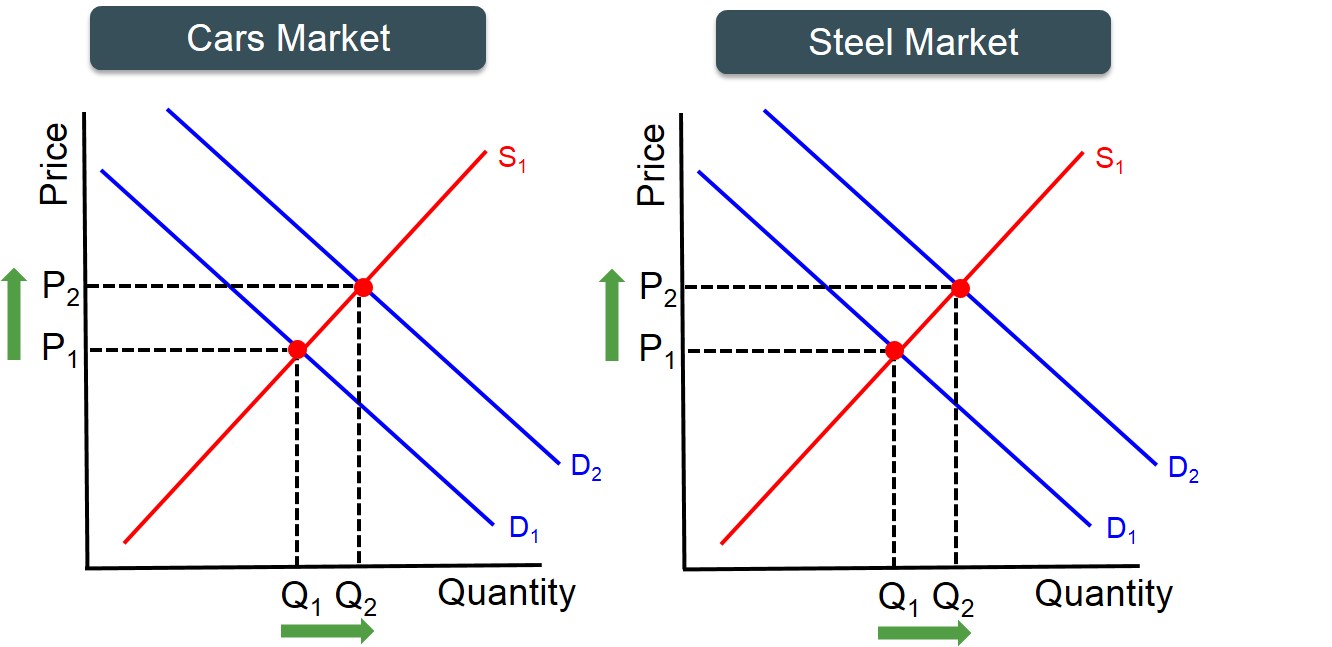
Describe composite demand…
Goods that have more than one use, so an increase in demand for one of its uses reduces its availability for another e.g. milk, oil
